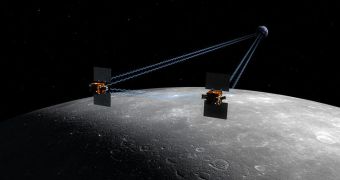Both the MErcury Surface, Space ENvironment, GEochemistry and Ranging (MESSENGER) orbiter and the Gravity Recovery And Interior Laboratory (GRAIL) missions are currently operating within mission extensions granted by NASA. Both completed their original science tasks successfully.
MESSENGER was originally supposes to spend one year in orbit around Mercury, but began its second year of continuous operations on March 17. Two days later, NASA officials announced that the GRAIL mission would get a 90-day extension as well.
The extension for MESSENGER's initial mission was decided upon in November 2011. The probe is only the second to study the innermost planet of our solar system from orbit. Several other spacecraft analyzed this world, but only during flybys.
The satellite was launched in 2004, but it wasn't until last year that is successfully achieved orbital insertion around the hot planet. In the meantime, it carried out flybys of Earth, Venus and Mercury.
Already, MESSENGER took more than 100,000 photos of the planet, and was able to provide experts with a deeper understanding of its interior, its atmosphere, as well as the composition of its magnetic environment and the chemical make-up of its surface.
Only a couple of days ago, scientists studying data from these spacecraft made a significant discovery, which appears to suggest that the innermost planet still has an active core. This has yet to be confirmed independently, but scientists say that it's possible geological activities are still taking place there.
On March 19, NASA also announced that it decided to prolong GRAIL's initial, 90-day mission by another three months. “It's about a 90-day mission, and then the extended mission will be another 90 days or so. Congratulations to the Grail team,” says Jim Green.
The NASA official, who holds an appointment as the head of the NASA planetary science division, made the announcement at the 43rd Lunar and Planetary Science Conference, which was held in The Woodlands, Texas, Space reports.
The purpose of the GRAIL mission is to map the gravitational pull of the Moon with extreme precision. This is done by flying two identical spacecraft through the exosphere, and constantly measuring the distance between them.
As they pass over areas of more intense pull, the distance separating them changes ever so slightly, but both GRAIL-A and GRAIL-B have payloads sensitive enough to detect the changes. These numbers are then transformed into high-detail maps.

 14 DAY TRIAL //
14 DAY TRIAL //